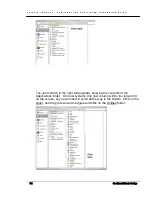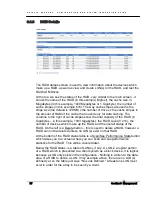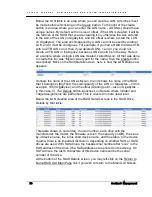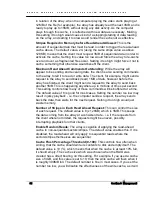
G A L A X Y ® A U R O U R A C O N F I G U R A T I O N A N D S Y S T E M I N T E G R A T I O N G U I D E
78
Section 3 Management
Below the LUN table is an area where you can create a LUN. All entries must
be made before left-clicking on the Create button. To the right of the create
button is an area where you can enter the LUN name - all LUN(s) should have
unique names. By default, with no size or offset, if the LUN is created, it will be
the full size of the RAID that you are creating it on, otherwise the size entered
is the size of the LUN (in Gigabytes), and the offset is where to start the LUN
(in Gigabytes). The area encompassed by a LUN can not be used by another
LUN, and it must be contiguous. For example, if you had a RAID that was 8TB,
with (4) 2TB LUNs on it, then if you deleted LUNs 1 and 3, you could not
create a 4TB LUN in that space, because LUN 2 would be in the way. Here is
an example, where a single LUN was created, called MyLun. All that was done
to create this lun was “MyLun” was typed for the name, then the Create button
was clicked. Back on the Raid Details screen, here is how the LUN status now
appears:
It shows the name of the LUN as MyLun, then it shows the name of the RAID
that it belongs to (BigFoot), the size/capacity of the LUN (in Gigabytes – in this
example, 1093 Gigabytes), and the offset (Starting point – also in Gigabytes –
in this case, 0). The Details button launches Lun Details, where Initiator and
Target assignments are performed. This is covered in more detail later.
Below the LUN creation area of the RAID Details screen is the RAID Drive
Details by Slot table:
This table shows (in slot order), the slot number, each drive with the
manufacturer, the model, the firmware version, the capacity (in GB), the Linux
by-id device name, the Linux short device name, and the status. In the device
column, there is an important distinction, depending on whether SAS or SATA
drives are used. With SAS drives, the hexadecimal number after “scsi-“ is the
SAS address of the drive (The SAS addresses are printed on the drives). On
SATA drives, the last 8 characters of this device name will be the serial
number of the drive.
At the bottom of the RAID Details screen, you may left-click on the Return to
NumaRAID GUI Main Page link if you wish to return to the Main GUI Screen.






























